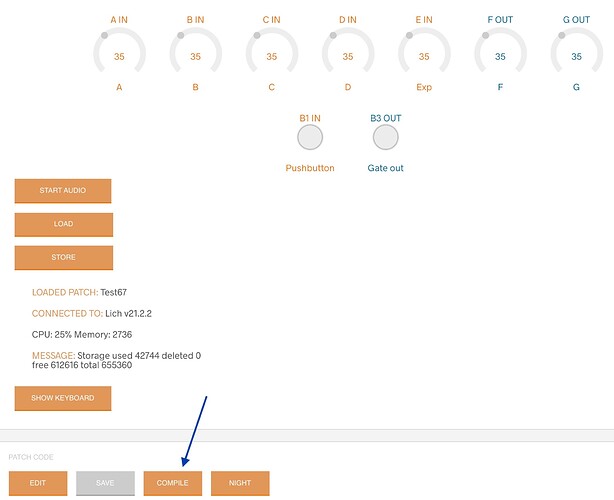Decide to centralize informations/questions about INs, OUTs, CVs and GATEs usage in gen~
In L :
- audio In automatically scaled to a -1 to 1 signal out of the
in 1object in gen~ - CV In L (from 0 to 10V), scaled to a -1 to 1 signal out of the
in 1object in gen~. Don’t know why but the signal is inverted in gen~, so you’ve to inverse it back with the* -1object.
In R :
- audio In automatically scaled to a -1 to 1 signal out of the
in 2object in gen~ - CV In R (from 0 to 10V), scaled to a -1 to 1 signal out of the
in 2object in gen~. Same here, need to be inverted.
CVs In (A, B, C D) from 0 to 10 V are added to corresponding knob value (from 0 to 1)
- so you get a signal from 0 to 10 out of “param A”, or B, or C, or D object in gen~ and you should set the @min and @max accordingly ??? param object clamp signals, but does it doing some sort of scaling in the same time???
Gate 1 and 2 normalized with the corresponding buttons:
- signal of 0 or 1 from “param Button A” or B object in gen~ according to the state of the gate in signal
In gen~ all outputs are audio signals, so to convert to CV outputs the values will be averaged each block. For triggers and gates (out 5), any value within the block that is over 0.5 will set the output high, otherwise it will be low.
The values sent to these outputs (out 3, out 4 and out 5) from gen~ should be scaled from 0.0 to 1.0 before entering to “out” object in gen~. Signal will be converted to full scale unipolar CV or trigger/gate output.
You can offset the output of out 3 or out 4 by adding tenth of volts. For instance adding 0.5 to the signal before leaving gen~ will offset the output by 5 V.
Finally, you’ll have to define out 3, out 4 and out 5 parameters using the online compiler as follow :
And don’t forget to compile again your code before loading to Lich :

